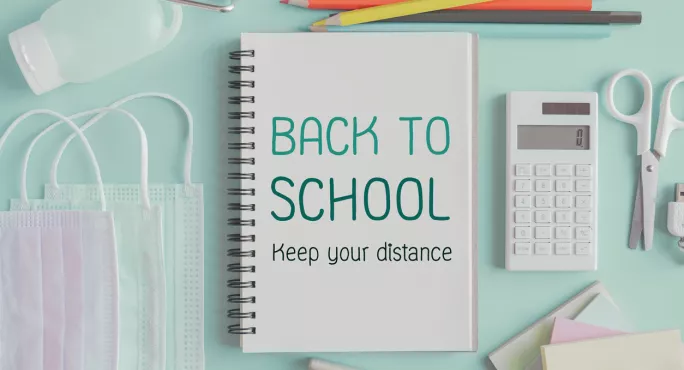- Home
- ‘Some pupils could be in school a third of the time’
‘Some pupils could be in school a third of the time’

A spokesperson for the body that represents Scottish local authorities has said there is “no way” pupils in Scottish schools with full rolls - or that are over capacity - will be spending half their time in school next year.
According to Stephen McCabe - who is Cosla’s spokesperson for children and young people as well as the leader of Inverclyde Council - these pupils will be more likely to spend a third of their time in school and the rest of the time learning at home.
Speaking to Tes Scotland, Mr McCabe said that councils were “absolutely committed” to getting children back to school, but they faced huge logistical, practical and financial challenges.
One challenge was the capacity of schools to have half the pupil population in the building at the same time as maintaining social distancing of two metres.
Background: School reopening plans in Scotland: what we learned
Related: ‘Schools not ready for pupils’ emotional needs’
Survey: Pupils not engaging with online learning, say teachers
News: Scottish councils begin reopening schools to pupils
Mr McCabe said: “There’s no way you will be able to fit the 50:50 model into a school which is at capacity or close to capacity. In some cases, therefore, you are potentially talking about having a third of the week in school. This has got to be done on a school-by-school basis.”
The Scottish government said in its guidance on reopening schools, published on 21 May, that most pupils would spend “around half their time in class and half learning at home”. It suggested that libraries and leisure centres and even empty business premises could be turned into classrooms by councils in order “to expand the ‘learning estate’”.
However, Mr McCabe said that repurposing buildings would have a cost attached and affordability was “absolutely a factor” when it came to working out what blended learning was going to look like come August, given the model could be in place for a year.
He added: “Councils will be looking at these alternatives but there will be costs to that - the costs of fitting these buildings out, the running costs and, if you have staff spread over more than one building, there will be additional staffing needed in terms of supervision. It may well be practical in a lot of cases but whether it is financially affordable is another matter.
“At the moment, a lot of community facilities are closed, but as we move into the next phase of the government plan for coming out of lockdown then potentially some community centres will reopen, albeit with social distancing in place. They will need to generate income to be sustainable so there may be challenges in terms of availability.
“There is no lack of commitment or will to get young people back to school or back into learning. Councils and staff are absolutely committed to that and they see the benefit of that but we need to make sure absolutely that it is safe and we need to make sure any model is sustainable.”
Mr McCabe said he knew of one council that was having to treble the number of buses it put on to get children to school so social distancing could be maintained. His own authority, meanwhile, had just agreed £500,000 of additional cleaning in public buildings - the majority of which were schools - but that covered just six months, he said. New signage for public buildings reminding people to maintain social distancing and introducing one-way systems was going to cost Inverclyde Council an estimated £100,000, he added.
The Scottish government has announced £30 million additional funding for home learning so that councils can provide devices like laptops for pupils, as well as access to the internet. It has also acknowledged that councils are likely to incur additional costs associated with reopening schools and has said it will “work closely” with them “to understand and address financing”.
Councils have also been given the green light to spend the money they receive to close the attainment gap between advantaged and disadvantaged pupils more flexibly.
However, Mr McCabe said that - while that flexibility was welcome - the amount of Scottish Attainment Challenge money that authorities received varied widely, given that it was linked to deprivation levels. He added that the vast majority of that funding was already tied up in staffing that schools were going to need come 11 August.
A Scottish government spokeswoman said: “The safety and wellbeing of all our pupils and staff is the overriding priority when it comes to re-opening schools. Precise details will vary from school to school but for the vast majority, classes are going to be much smaller to allow physical distancing and, as a result, children are likely to spend about half their time learning at home.
“We are providing local authorities and schools with flexibility to redirect resources aimed at closing the attainment gap to help mitigate the impacts of the crisis on our most disadvantaged families. This includes the recent announcement of £250 million for Pupil Equity Funding over the next two years.
“The Scottish government and Cosla jointly wrote to all local authorities last month setting out an agreed position on the next financial steps required.”
Register with Tes and you can read two free articles every month plus you'll have access to our range of award-winning newsletters.
Keep reading with our special offer!
You’ve reached your limit of free articles this month.
- Unlimited access to all Tes magazine content
- Save your favourite articles and gift them to your colleagues
- Exclusive subscriber-only stories
- Over 200,000 archived articles
- Unlimited access to all Tes magazine content
- Save your favourite articles and gift them to your colleagues
- Exclusive subscriber-only stories
- Over 200,000 archived articles



